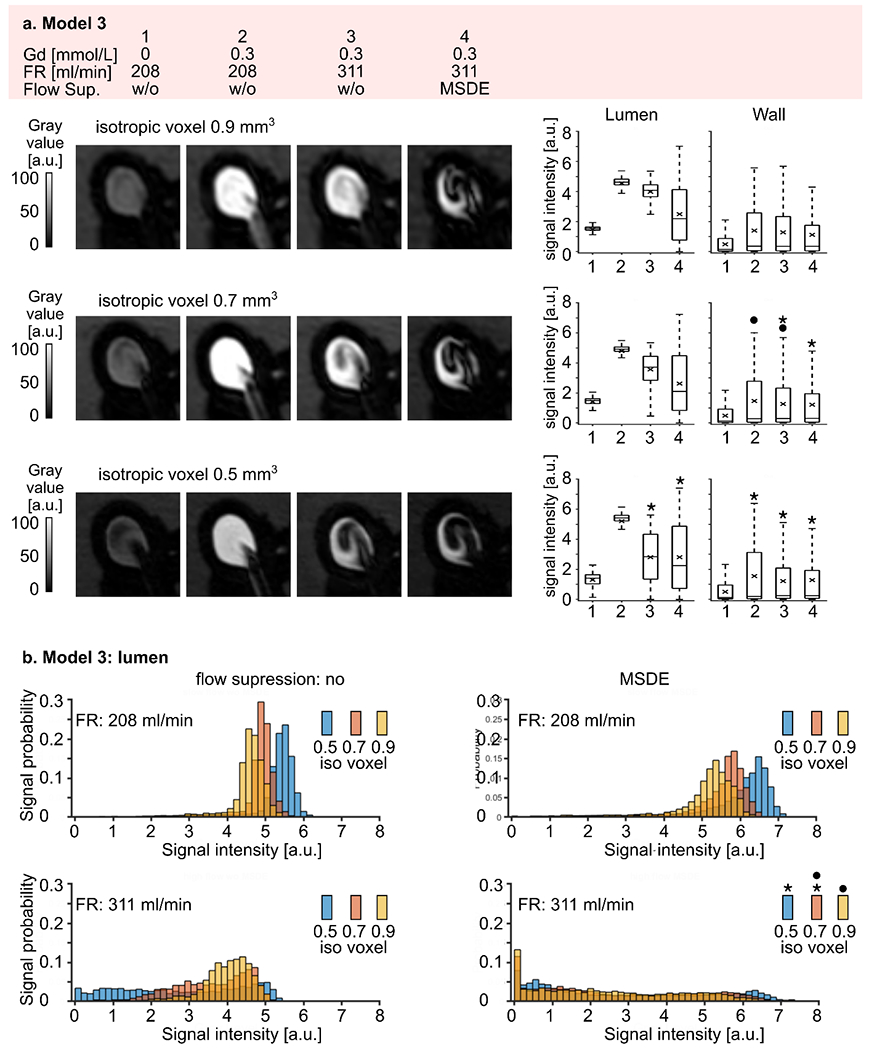Figure 9.

(a) Representative black-blood MR images of model 3 (slow intra-aneurysmal flow) before (1) and after (2-4) administering contrast agent, with low (1-2) and high (3-4) flow rates and additional flow suppression (MSDE, 4). The experiment was repeated with three different voxel sizes: 0.9, 0.7, and 0.5 mm3 (from top to bottom). Note that the black-blood suppression was more pronounced at smaller voxel sizes. Signal intensities were measured in the lumen and at the wall (right). Signal intensities increased when contrast agent was added and reduced at a higher flow rate and with MSDE. The quantitative results visualized with box plots, with the whiskers representing the upper and lower quartile. Asterisks indicate a p-value > 0.01.
(b) Distribution of black-blood MRI signal intensities within the aneurysm lumen of model 3 visualized by histograms, where the bar height represents the probability of finding a particular signal value in an aneurysm sac depending on the voxel size. Note that the probability of low signal intensities was higher when a smaller voxel size was used. Asterisks indicate a p-value > 0.01).
